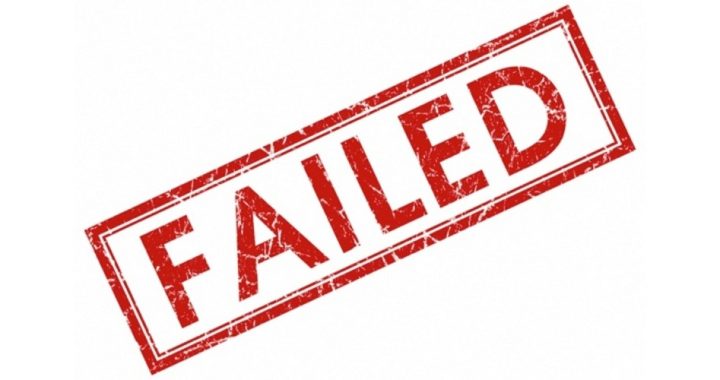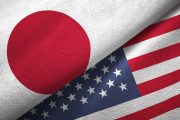
In announcing Australia’s new federal gun amnesty program, Justice Minister Michael Keenan told the Sunday Mail last week: “This is the first Australia-wide gun amnesty program since 1996, when the Howard government took action following the devastation of the Port Arthur Massacre.” The massacre of 35 people and the wounding of another 23 in late April, 1996 at the popular tourist site in southeastern Australia served as the excuse to implement the country’s National Firearms Agreement (NFA). The NFA turned millions of law-abiding gun owners into criminals with its heavy restrictions, and the amnesty program was designed to remove the now-illegal weaponry from their rightful owners with a mixture of carrot and stick.
Those restrictions included stringent licensing requirements in order to possess firearms, with applicants having to prove a “genuine reason” (self-defense was not an adequate reason) for owning a firearm. The measure banned civilian possession of several types of commonly owned firearms, including semi-automatic rifles and semi-automatic and pump-action shotguns.
The “carrot” was the offer by the government — funded by taxpayers — to purchase the now-offending firearms for a “fair” price, with no questions asked. The “stick” was jail time for those who didn’t take up the offer. Following a massive public-relations campaign, using the horror at Port Arthur as grist, 660,000 firearms were turned in and destroyed.
The assumption underlying the assault on personal liberty was that safety from future massacres was more important, justifying Australia’s attack on that liberty. It didn’t take long for that assumption to be proven false. A study in 2002 headed up by Professor Peter Reuter at the Department of Criminology at the University of Maryland entitled “Australia: A Massive Buyback of Low-Risk Guns” revealed the futility of the buyback program.
There were an estimated 3.2 million firearms possessed by law-abiding Aussies before the NFA was enacted. After the buyback program ended in 1997, there remained an estimated 2.4 million firearms still in private hands. The report analyzed the available data to see if there was any measurable decline in violent crime in the years following the buyback, and pointed out the futility of the effort: “The buyback alone was an implausible candidate for reducing crime rates because the targeted gun type was one not much used in homicides or, presumably, other kinds of violent crime.” The report concluded: “The results provide little insight.”
In other words, millions were spent in abrogating the natural rights of Australian citizens, going after weapons that weren’t even being used in violent crime.
The new program is a tacit admission that the first effort failed, leaving the vast majority of now-illegal firearms in the hands of the country’s citizens who largely ignored the mandate, and so a second one is being ramped up in an attempt to complete the process. And it will likely fail as well.
Seattle’s buyback experiment proves the point. The program was implemented in 1992 following a series of shootings in a local neighborhood. Two years later, a study paid for by a grant from the Centers for Disease Control and Prevention and entitled “Money for Guns: Evaluation of the Seattle Gun Buy-Back Program,” concluded its futility. Three professors, one from the University of Rochester and two from the University of Washington, analyzed the available data, and uncovered some interesting facts:
• Of the 1,772 firearms that were purchased by the city, 95 percent of which were handguns, only 83 percent of which were operational;
• A “surprising” number of older citizens and women participated in the buyback, “apparently exchanging guns they no longer wanted”; and
• The handguns collected “represented less than 1 percent of handguns in Seattle homes.”
The professors concluded that “the effect of removing one percent of guns from the community on rates of firearm crimes is negligible [and that] the Seattle buyback program failed to reduce significantly the frequency of firearm injuries, deaths, or crimes.”
There were, as usual, some unintended consequences of the Seattle buyback program. The program likely encouraged the theft of handguns in the Seattle area by criminals who then sold them to the city. It also allowed criminals to turn in guns that had been used in crimes as a way to dispose of them without the risk of criminal prosecution. When lines formed of people waiting to turn in their guns for compensation, buyers showed up offering them a better deal, turning the event into “an open air bazaar,” according to observers. This, of course, eliminated any need for background checks.
The plan to entice Australians still owning now-illegal firearms to sell them without criminal prosecution is likely to fail just as the earlier one did 20 years ago, and just as the Seattle experiment proved 15 years ago. Buybacks, using carrots and sticks, just aren’t effective at preventing violent crime. They don’t even work very well to disarm the population, either. And it’s helpful to remember that Australia doesn’t have the “gun culture” of America, nor does it have either a Second Amendment or the National Rifle Association.
Nevertheless, Aussies know when their rights are being violated.
An Ivy League graduate and former investment advisor, Bob is a regular contributor to The New American magazine and blogs frequently at LightFromTheRight.com, primarily on economics and politics. He can be reached at [email protected].



